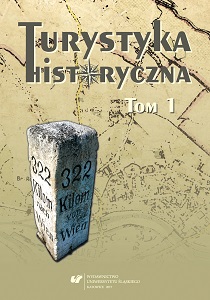Górnośląskie kopalnie jako obiekty turystyczne
Upper Silesian mines as tourist attractions
Author(s): Adam Frużyński
Subject(s): Historical Geography, Local History / Microhistory
Published by: Wydawnictwo Uniwersytetu Śląskiego
Keywords: coal mines; tourism;
Summary/Abstract: For many years coal mines were treated only as a coal mining area. When the coal deposits were depleted or mining became unprofitable, mines were closed and all their buildings were demolished. It was not until the interwar period that the first projects of making fragments of “Concordia” mine in Zabrze and “Fryderyk” mine in Tarnowskie Góry accessible to tourists were made. Their realization was interrupted by the outbreak of World War II. Initially, in the Polish People’s Republic, the problem of preservation and making mining objects available was not being taken care of. It was not until 1965 that on the site of West Field of “Zabrze” coal mine an underground route designed for tourists came into existence. In 1976 the first visitors were received by Historic Silver Mine in Tarnowskie Góry. Founded in 1979, Coal Mining Museum made two mines available for tourists. In 1982 Open‑air Mining Museum “Guido” and in 1993 Historic Mine “Królowa Luiza” came into existence. Restructuring of the mining industry, conducted from the beginning of ‘90s, led many mines to being closed. It triggered the creation of many local initiatives focusing on preservation of some mines as tourist attractions – bearing witness to the development of a given place. This way mines “Saturn” in Czeladź, “Ignacy” in Rybnik, “Michał” in Siemanowice and shaft “Maciej” in Zabrze were open for tourists.
Book: Turystyka historyczna T. 1
- Page Range: 242-262
- Page Count: 21
- Publication Year: 2017
- Language: Polish
- Content File-PDF

